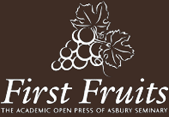About This Journal
Description of Inductive Biblical Study as adopted by the Journal of Inductive Biblical Studies
The term inductive is used in both a broader and a narrower sense. In the broader sense, it involves a commitment to move from the evidence of the text and the realities that surround the text to possible conclusions (or inferences) regarding the meaning of the text. In the sense, inductive is practically synonymous with evidential or against deductive, which is presuppositional, involving a movement from presuppositions with which one approaches the text to a reading of the text intended to support these presuppositions.
In the narrower sense, inductive biblical study pertains to a movement in the history of hermeneutics that traces its beginning to the work of William Rainey Harper, of Yale and the University of Chicago, and his associate Wilbert Webster White, a Yale-trained Hebraist and the founder of the Biblical Seminary in New York. These scholars were concerned that the almost exclusive attention paid to higher-critical issues rendered the study of the Bible lifeless and devoid of clear significance for Christian faith and ministry. Consequently, they insisted that students should give priority to examining the scriptural text in its final form. This procedure involved special attention to the ways in which the immediate and broader-book context of passages and the literary structure of passages themselves inform the understanding of their meaning.
Although the origin of the inductive bible study in the narrow sense is associated especially with the founding of the Biblical Seminary in 1900, this approach had precursors in the history of interpretation and has, since the beginning of the twentieth century, enjoyed widespread dissemination.
This more narrow sense of induction involves a number of emphases that reflect both the convictions of Harper and White and the ways in which inductive Bible study has developed over the years. First, it emphasizes the meaning of the final form of the text. This attention to the final form arises from two considerations. The first consideration is that this final form is, in fact, the only text that actually exists today. All earlier resources or redactional (editorial) processes that may lie behind the text and could have contributed to the development of the text are more or less speculative in terms of whether they ever existed or their specific character or shape. In any case these earlier stages of the tradition no longer have a material existence but are scholarly constructions. An inductive approach recognizes that source theories and redactional constructions might at times be helpful in the interpretation of the final text and should be used in interpretation, with the provisio that their tentative character and their limitations must be used in interpretation, with the provisio that their tentative character and their limitations must be kept in mind. The second consideration is that the church has accepted this final form of the text as canonical Scripture. Indeed, when one talks about the Bible, one assumes a canonical collection and one implies a canonical form. Thus inductive Bible study gives priority to the text in its final form. The use of background knowledge, considerations of the development of traditions that lie behind the final form of the text, the history of interpretation, and so forth are incorporated into an overall process that has as its starting point the examination of the text itself and has as its goal the meaning of the text in its final, canonical shape.
A second emphasis of inductive Bible study is the form of the text, giving serious attention to the ways one can identify literary structure and can show how such structure informs the meaning of the text. It also pays attention to the ways in which literary genre has a bearing upon construal of meaning. The emphasis upon structure and genre is supported by the consideration that communication never comes as pure content but that form and content are always inextricably bound together in the communicative process.
The concern with the final form of the text leads to an emphasis upon the study of the biblical book as, in most cases, the basic literary unit in the Bible's final form. Consequently, an inductive approach insists that one recognize both the importance of interpreting individual passages in light of their function within the world of the book in which they stand and the importance of grasping the message of books-as-wholes.
But inductive biblical study insists also that the Bible is a library of books and not just a random collection of separate documents. The Bible describes a continuous history from the beginning of the creation in Genesis 1 to the end of history in Revelation 22. And the Bible presents a message that seems to have a significant consistency throughout. A core of unity exists within the whole Bible, along with some differences of perspective among the individual biblical books. Therefore, an inductive approach allows room to consider how each biblical book and indeed each passage, contributes to the message of the whole Bible.
In sum, inductive biblical study is essentially a comprehensive, holistic study of the Bible that takes into account every aspect of the existence of the biblical text and that is intentional in allowing the Bible in its final canonical shape to speak on its own terms, thus leading to accurate, original, compelling, and profound interpretation and contemporary appropriation.
For a fuller presentation of inductive biblical study, see Inductive Bible Study: A Comprehensive Guide to the Practice of Hermeneutics, by David R. Bauer and Robert A. Traina.
